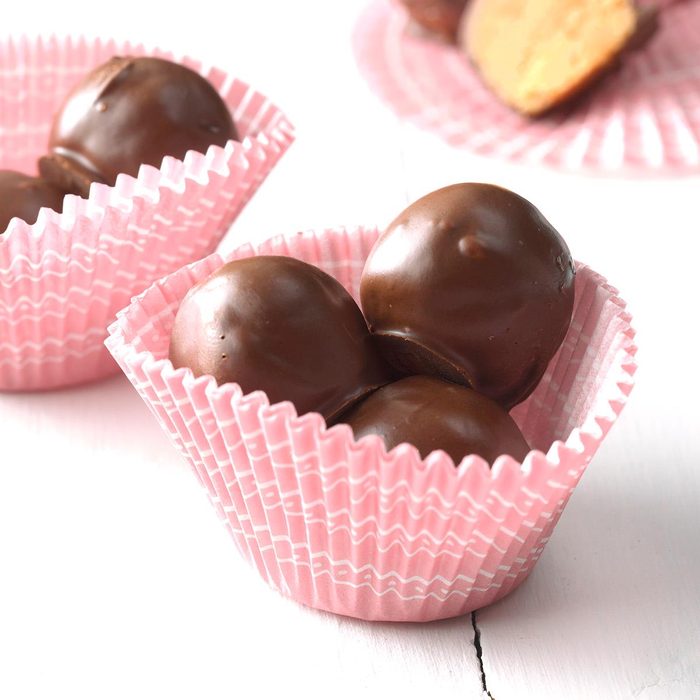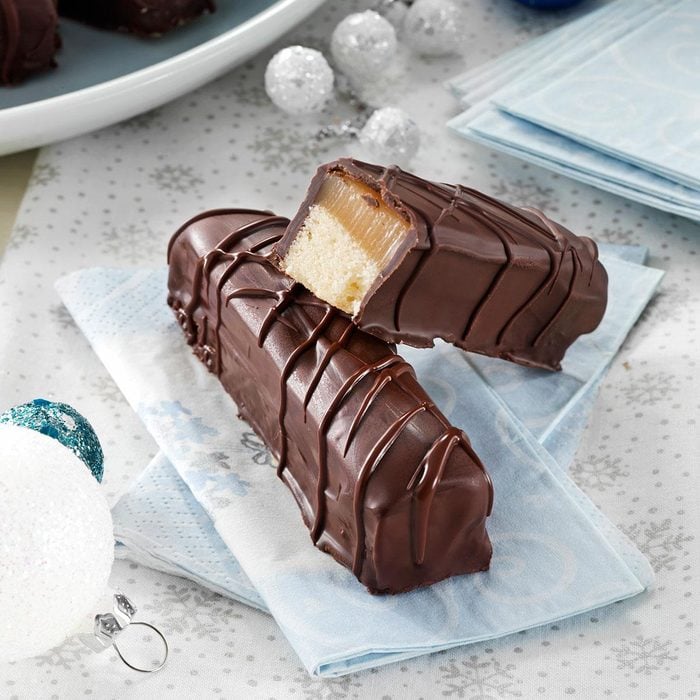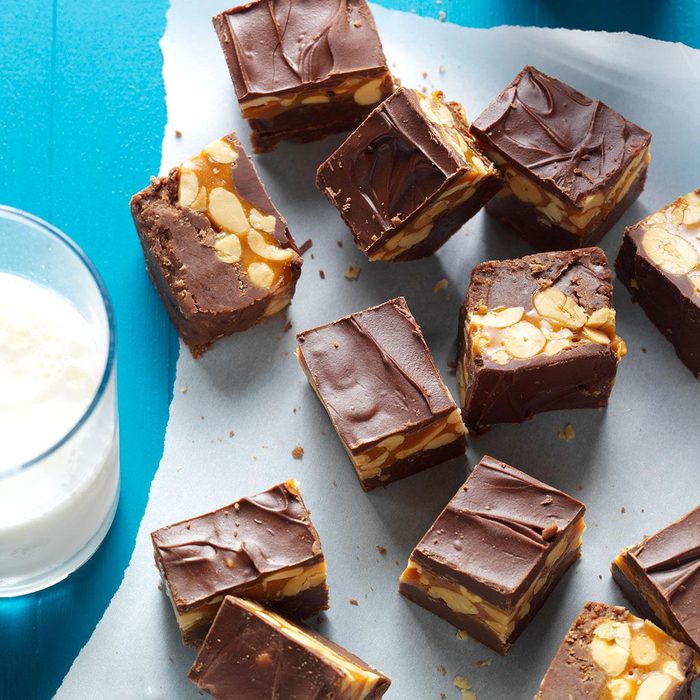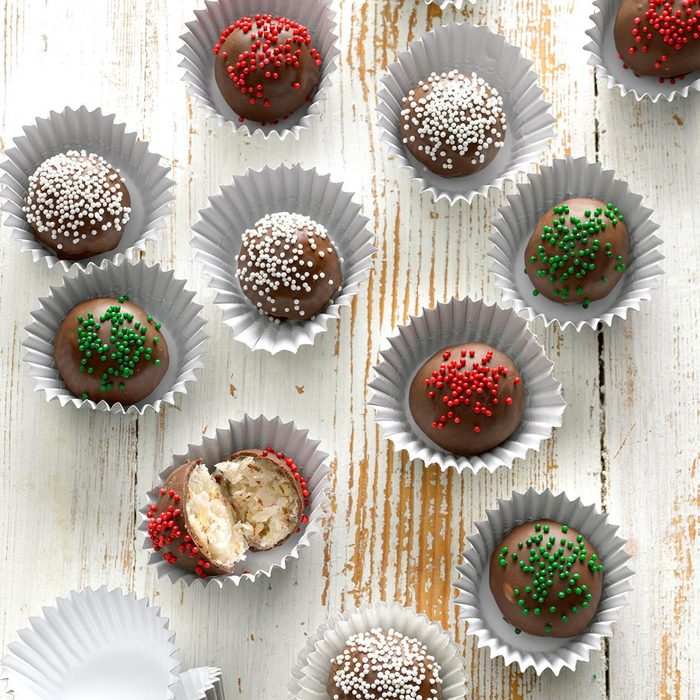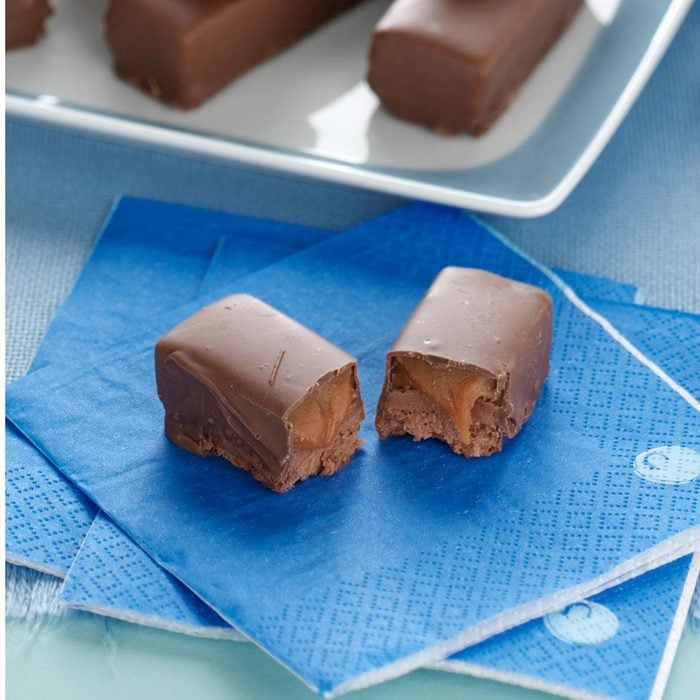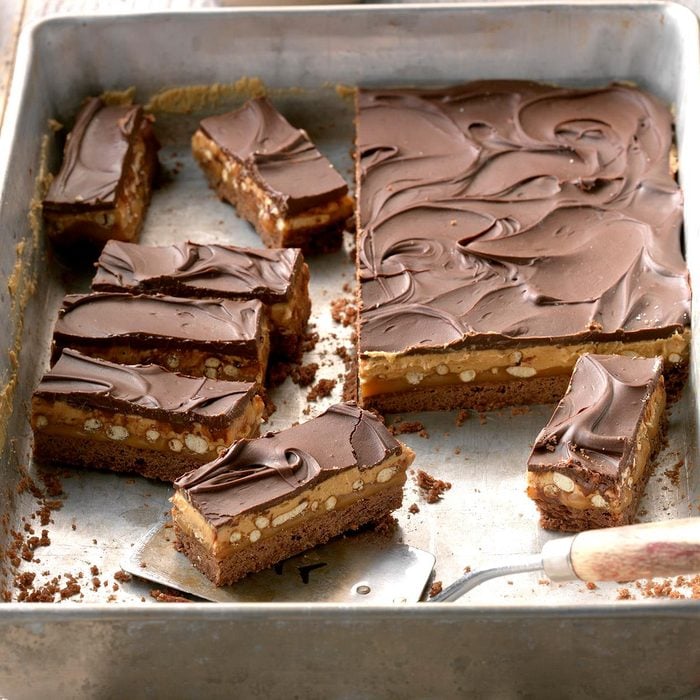5 Mistakes Everyone Makes When Making Candy From Scratch
Updated: Aug. 03, 2024
Who doesn't love a batch of homemade fudge? While it does take some finessing to get right, don't let potential candy-making mistakes stand in your way of delicious treats. We'll walk you through the most common errors and tell you how to fix them.

Whether you’re whipping up a batch of caramels (here are 10 yummy recipes, including soft rum caramels) in your kitchen or satisfying your family’s sweet teeth by making chocolate candies like these chocolate truffles, there is definitely a trick to the trade when it comes to avoiding candy-making mistakes. The most novice of candy makers is going to inevitably stumble make a few missteps, but with these tips here’s how to avoid them.
1. You added the sugar wrong
Ever bite into a piece of fudge—or any dessert, really—and taste, um, crystallization? That’s a flavor note that’s not supposed to hit your palate. This happens when the sugar is stirred in the same manner you’d stir anything else. To avoid an undesirable sandy, grainy flavor, swirl the pot via your turning wrist, lifting the pot off of the burner. In need of a killer fudge recipe? Here are some ideas.
2. You did not use a candy thermometer.
This handy gadget—with the name “candy,” none the less—is produced and sold for a reason: to ensure that your chocolate, fudge or caramels turn out exactly right. The difference of just a few degrees can turn your caramels from soft and chewy to a trip to the dentist. So if you’re serious about making caramels, fudge and more, you’ll want to invest. And make note of these important candy stages:
- Soft ball (around 235ºF): Syrup added to cold water forms a “soft ball” that is fudge-like, super flexible and can flatten easily.
- Firm ball (around 245ºF): This is utopia, the perfect stage, for molding into balls or other shapes, applying some pressure.
- Soft crack (around 280ºF): The mixture begins to become pliable.
- Hard crack (around 300ºF): Candy becomes brittle, almost ready for eating!
(Our guide to how to make candy has pictures of what sugar looks like at each of these candy stages!)
3. You forgot to coat the pan.
Candy is sticky stuff! The last thing you want is for it to stick to the bottom of your pan—so always, always coat your pan. You can always use a spritz of cooking spray or butter your pan to keep everything from sticking. You can also use coconut oil. This imparts a sweet flavor and is as natural an ingredient as you can find. By the way, these are our best fudge recipes.
Tip: Homemade fudge can be a little fussy, but it’s easy to make if you avoid these common fudge mistakes.
4. You sliced the candy too soon.
It’s tempting, once your kitchen smells like chocolate or caramel, to cut right into the goods as they cool, fresh out of the oven. But doing so can cause harm. The candy should cool for at least eight hours or overnight. To be doubly sure that it’s the right time to slice, take a room-temperature knife and run it under warm water first.
5. You failed to store candy properly.
If you wake up to find that your candied citrus has gone too soft or your caramels have dried out, it’s likely because the candy wasn’t stored properly. Whatever you’re cooking up, be sure to use an airtight container to keep air out (and freshness in).
With those five tips, you should be on your way to candy making success! If you’ don’t mind us, we’ll just be dreaming of marshmallow, caramel and fudge.
Next, take a look at these common fudge mistakes and how to avoid them.


